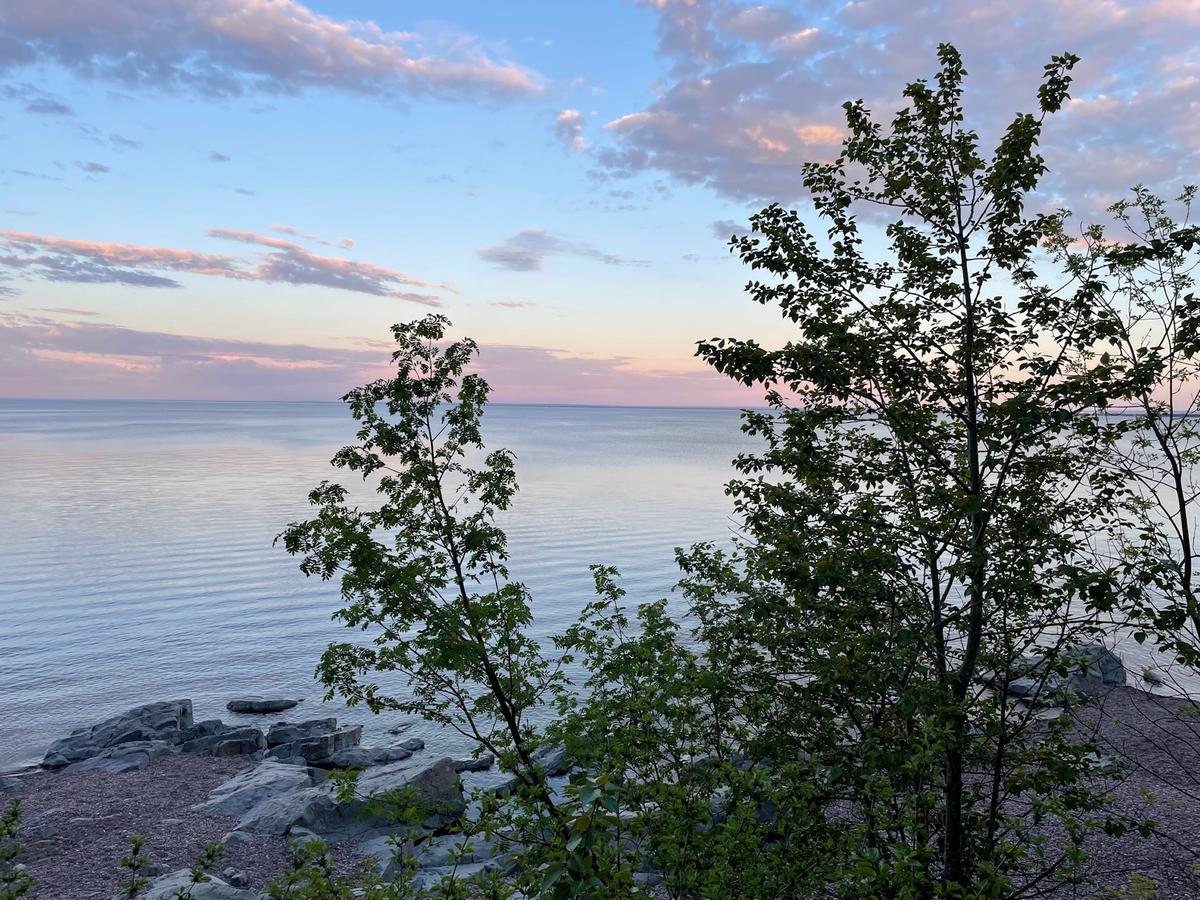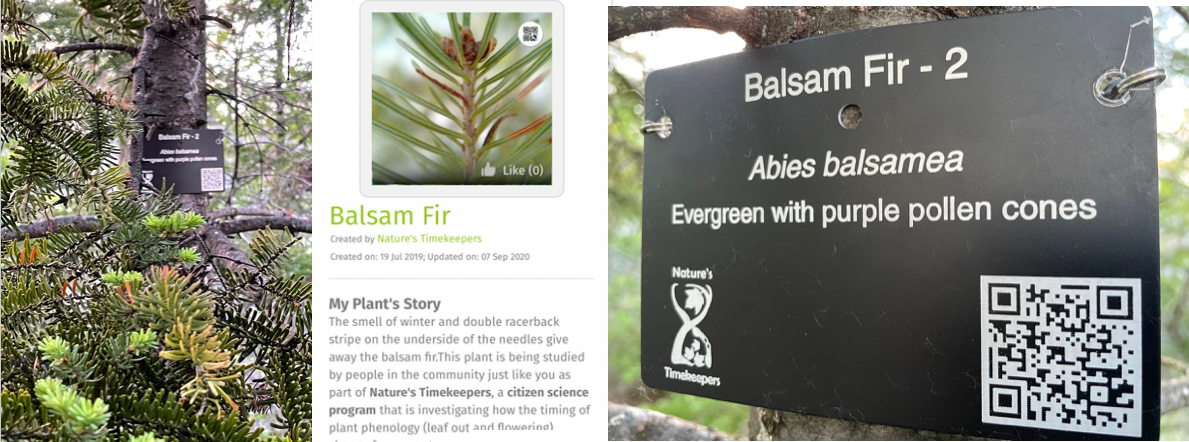In May 2022 UMD associate professor Jessica Savage and a student team installed signs around trees on the Duluth Lakewalk. The project, known as Nature’s Timekeepers, involves phenology, a field that relates to the timing of events in the natural world. "It's an effort to raise awareness," Savage says.
There are two parts to the effort. The first is to give information. Each sign identifies the tree type, and has a QR code that links information about the program and the species. The signs can also be found at Boulder Lake Environmental Center and Bagley Nature Area, in addition to the Duluth Lakewalk.
The second part involves the UMD research team. "We see changes that tell us a little bit about the climate and what is happening," says Savage. "One of the observations is the timing of plant changes throughout the year. Plants are responding to climate change. They are not staying steady."
Savage says the differences in the trees are a good way to mark when we have changes, such as an earlier and warmer spring. "This year, the observations mark that we had a drought. We are seeing variations in the way the colors are changing this fall," she says.
The students and community volunteers go to the sites each week and make observations about the trees. They look for when the trees produce flowers, fruits, and seeds.
“The volunteers make it possible for me to gather much more data for my research,” said Savage. “And hopefully, they’re learning more about our natural environment." More than that, the people on the project have the opportunity to meaningfully connect with nature.
To learn more about this effort, visit the Lake Superior Phenology website or Lake Superior Phenology Facebook page.


